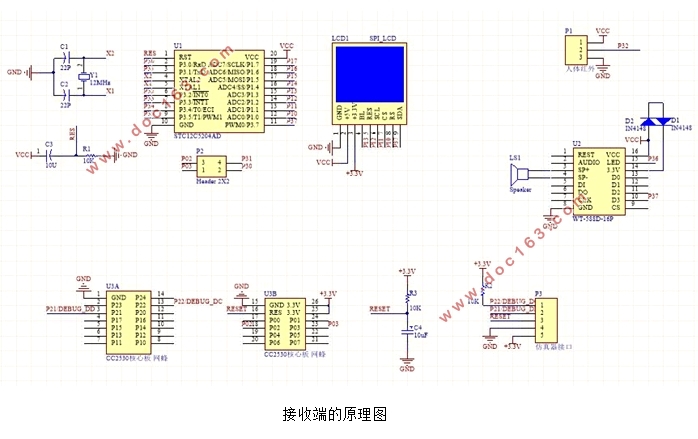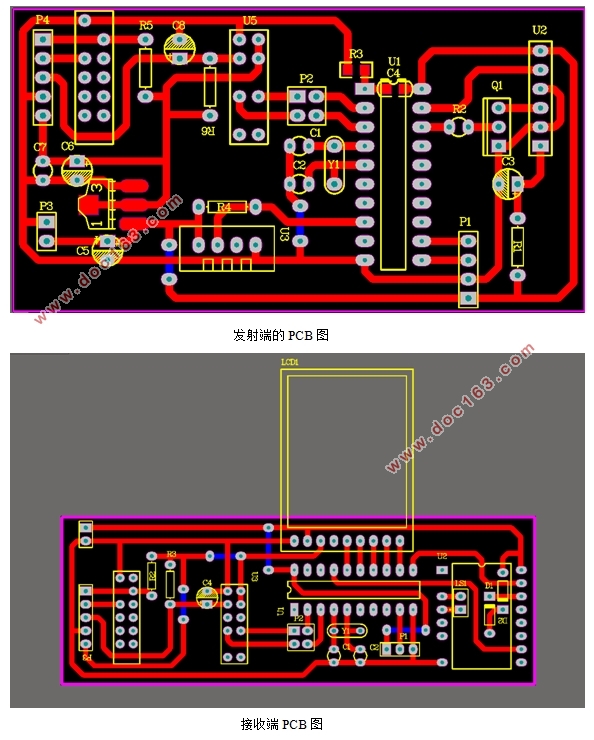基于ZigBee的家庭环境监测系统的设计

基于ZigBee的家庭环境监测系统的设计(开题报告,论文10200字)
摘 要
本文首先对家庭环境监测的课题背景、研究意义、发展趋势与展望以及ZigBee技术的原理都进行了较为详尽的介绍;并进一步阐述了系统的总体设计思路,进而给出了硬件电路设计过程以及软件编程的流程图。通过软件Autium Designer 对硬件电路进行设计并画出PCB图,通过TI公司的IAR Embedded Workbench进行编程开发、调试。
该系统通过对家庭环境的温湿度、大气压、PM2.5以及CO浓度等环境参数的实时监测,通过显示屏进行显示,并进行语音播报,给予人们一些必要的提示,提醒人们注意加减衣物等信息,极大地方便了人们的生活。
本系统的优点是功耗低、成本低,控制起来也比较方便、灵活。经过运行与测试,该系统稳定性较好,同时对于环境参数测量的误差也基本控制在合理的范围内,能够实现实时环境监测的功能,达到了预期的设计目标。
关键词:ZigBee技术 IAR 环境参数 语音播报
Design of home environment monitoring system based on ZigBee
Abstract
Firstly,the research background,research significance,development circumstence of home environment monitoring system and ZigBee technology are introduced in this paper. Secondly it describe the integral design.Then it introduces the hardware circuit design and software design flow chart.The system use the software Designer Autium to design the hardware circuit and draw the PCB diagram.And programming development platform is IAR Embedded TI Workbench ,which is used to compile and debug the program. [资料来源:www.doc163.com]
The system monitors environmental parameters of the family environment such as temperature, humidity, atmospheric pressure, PM2.5 and CO concentration, then display gathered data through the screen and broadcast the related information, giving people some necessary tips to add clothing information, whcih really provides great convenience for people's life .
The system has the advantages of low power consumption, low cost, flexible usage, convenient control and so on. After testing, and the stability of this system is good.At the same time, the error of the measurement of environmental parameters can be controlled within a reasonable range,so the system can achieve the function of real-time environmental monitoring.
Key Words: ZigBee technology; Environment parameters;IAR;Voice broadcast
[资料来源:http://www.doc163.com]



目 录
摘 要 I
Abstract II
第一章 绪论 1
1.1 课题的背景及研究意义 1
1.2 课题的发展趋势及展望 1
1.3 ZigBee技术的介绍 2
第二章 系统的总体设计 4
2.1 课题研究的内容 4
2.2 设计思路分析 4
2.3 总体设计框图 5
第三章 硬件电路设计 7
3.1 大气压监测电路设计 7
3.2 温湿度监测电路设计 8
3.3 PM2.5监测电路设计 9
3.4 人体红外探测电路设计 11
3.5 CO浓度监测电路设计 12
3.6 显示电路的设计 13
3.7 语音播报电路的设计 14
3.8 ZigBee节点电路的设计 15
3.9 单片机最小系统模块设计 17
3.10 电源电路设计 18
第四章 软件设计 19
4.1 软件设计思路分析 19
4.1.1 设计思路 19
4.1.2 协议栈Z-Stack的简介 19
4.1.3 协议栈的工作原理 20
4.2 发射端软件设计 21
4.2.1 主程序设计 21
4.2.2 大气压监测子程序设计 22 [版权所有:http://DOC163.com]
4.2.3 温湿度监测子程序设计 24
4.2.4 PM2.5监测子程序设计 25
4.3 接收端软件设计 25
4.3.1 主程序设计 25
4.3.2 显示模块程序设计 26
4.3.3 语音播报模块程序设计 27
第五章 调试与结果分析 29
5.1 调试过程 29
5.2 结果分析 30
参考文献 33
致 谢 35
附录 36 [资料来源:Doc163.com]
